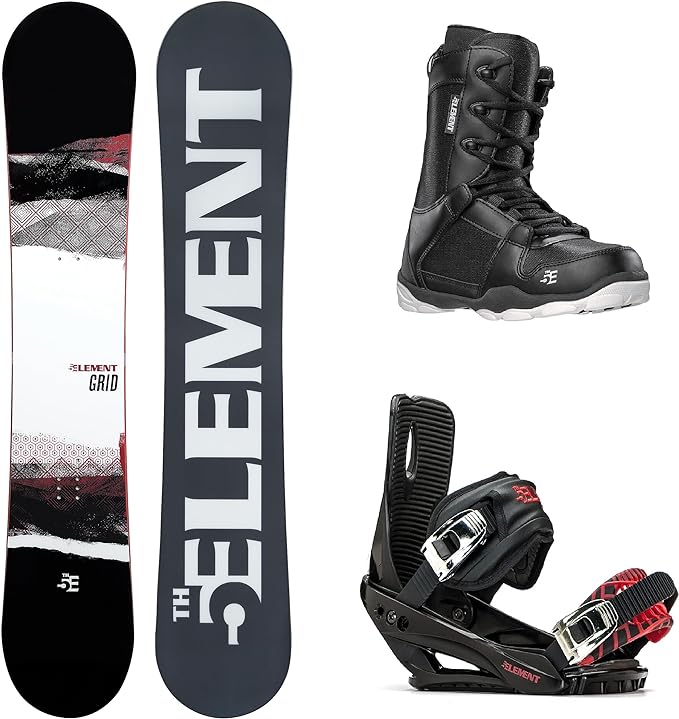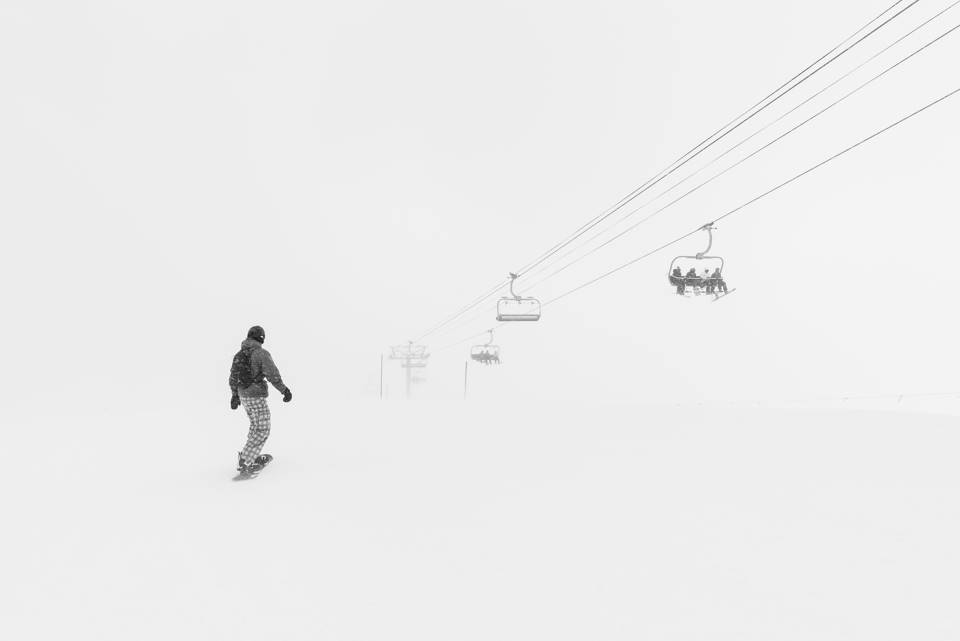Are you a beginner snowboarder looking to purchase your first snowboard? Or maybe you’re an experienced rider in need of a new board? Whatever the case may be, understanding snowboard sizing is crucial in making the right choice for your riding style and abilities. In this blog post, we’ll delve into the factors affecting snowboard length, the importance of choosing the ideal snowboard height, and how to test and adjust snowboard length to ensure a perfect fit for an enjoyable ride on the slopes. Let’s get started!
Understanding Snowboard Sizing
When it comes to snowboarding, one of the most important factors to consider is the size of your snowboard. Getting the right size is crucial for a number of reasons, such as maneuverability, stability, and overall performance on the slopes. So, how do you go about understanding snowboard sizing? Let’s break it down.
Length
The length of a snowboard is typically measured from the tip to the tail. It is an important factor to consider as it directly affects how the board performs in different conditions. Longer boards provide more stability at high speeds and better float in powder, while shorter boards offer increased maneuverability and are easier to control for beginners.
Width
Another aspect of snowboard sizing is the board’s width. This refers to the distance between the edges of the board and impacts how easily you can transfer your weight from one edge to the other. If your boots hang over the edges too much, you may experience toe or heel drag, reducing your control. On the other hand, if the board is too wide for your boots, it can make turning and carving more challenging.
Weight and Ability Level
Your weight and skill level are also essential considerations for snowboard sizing. Heavier riders may need longer and wider boards to ensure stability and prevent the board from feeling too flexible. On the other hand, lighter riders may prefer shorter boards for increased maneuverability. As for ability level, beginners are generally advised to choose shorter boards for easier handling, while more advanced riders may opt for longer boards to accommodate their higher speeds and skill.
| Frequently Asked Questions: |
|---|
|
Now that you have a better understanding of snowboard sizing, you can confidently choose the right board for your needs. Remember to consider length, width, weight, and ability level to ensure the best possible snowboarding experience. Happy shredding!
Factors Affecting Snowboard Length
Finding the perfect snowboard length can make all the difference when it comes to your performance on the slopes. The length of your snowboard plays a crucial role in how it handles, how fast it goes, and even how it feels under your feet. But what factors should you consider when determining the ideal snowboard length for you? Let’s dive into the key factors that can affect snowboard length.
1. Riding Style: Your riding style is perhaps the most important factor to consider when determining snowboard length. Are you a freestyle rider who enjoys jumps, spins, and tricks in the terrain park? Or are you more of a freerider who loves exploring the backcountry and carving deep powder? Freestyle riders usually prefer shorter boards for better maneuverability, while freeriders often opt for longer boards for added stability and float in deep snow.
2. Body Weight: Body weight also plays a role in determining the appropriate snowboard length for you. Heavier riders may require longer boards to distribute their weight effectively and provide better stability at higher speeds. On the other hand, lighter riders may find shorter boards more manageable and easier to control.
3. Ability Level: Your ability level is another important factor to consider when choosing a snowboard length. Beginner riders typically benefit from shorter boards as they are easier to control and maneuver. As you progress and become more comfortable on the slopes, you may choose to go for a longer board that offers more speed and stability.
4. Terrain: The type of terrain you predominantly ride on can also influence the ideal snowboard length. If you mostly ride on groomed runs and hard-packed snow, a slightly shorter board can provide better maneuverability. However, if you frequently venture into deep powder or ride in off-piste conditions, a longer board will provide the necessary float and stability.
| Factors | Affecting Snowboard Length |
|---|---|
| Riding Style | Freestyle riders usually prefer shorter boards for better maneuverability, while freeriders often opt for longer boards for added stability and float in deep snow. |
| Body Weight | Heavier riders may require longer boards to distribute their weight effectively and provide better stability at higher speeds. Lighter riders may find shorter boards more manageable and easier to control. |
| Ability Level | Beginner riders typically benefit from shorter boards as they are easier to control and maneuver. As you progress and become more comfortable on the slopes, you may choose to go for a longer board that offers more speed and stability. |
| Terrain | If you mostly ride on groomed runs and hard-packed snow, a slightly shorter board can provide better maneuverability. On the other hand, if you frequently venture into deep powder or ride off-piste, a longer board will offer the necessary float and stability. |
Choosing The Ideal Snowboard Height
When it comes to hitting the slopes, one of the most important decisions you’ll have to make is choosing the right snowboard height. After all, your height and skill level will play a crucial role in determining how well you can handle the board and enjoy your ride. So, let’s dive right into the factors that you need to consider when selecting the ideal snowboard height.
Firstly, it’s essential to understand that snowboard height is primarily determined by your weight and skill level. If you’re a beginner or a lighter rider, opting for a shorter snowboard is generally recommended. This will allow for easier maneuverability and control, making it simpler for you to learn the ropes and progress your skills on the mountain.
However, if you’re an advanced rider or on the heavier side, a longer snowboard may provide the stability and edge hold that you need to tackle challenging terrains. Keep in mind that longer boards are generally faster but require more advanced skills to handle effectively. So, make sure to choose wisely based on your abilities.
| Factors Affecting Snowboard Length |
|---|
|
Lastly, it’s worth noting that personal preference also comes into play when selecting the ideal snowboard height. Some riders may prefer a slightly shorter board to enhance their ability to weave through trees and tight spaces, while others may opt for a longer board for maximum stability during high-speed descents.
Testing And Adjusting Snowboard Length
When it comes to snowboarding, getting the right board length is crucial for your performance on the slopes. But how do you know if your current snowboard length is the ideal fit for you? This is where testing and adjusting your snowboard length comes into play.
So, how exactly do you go about testing your snowboard length? One popular method is to test your board’s length by standing it upright next to you. The tip of the snowboard should reach somewhere between your chin and collarbone. This general guideline ensures that you have a board that is suitable for your height and weight.
But it’s important to note that the height and weight guidelines may not be applicable to everyone, especially those who have a particular riding style or preferences. Certain factors such as your skill level and the type of terrain you intend to ride on can also affect the best snowboard length for you.
- So, now that you’ve determined your starting point, it’s time to hit the slopes and test your snowboard length in real-life conditions. Pay attention to how the board feels under your feet – does it give you the control and stability you desire? Or does it feel too long or too short? Trust your instincts and make note of any areas where you feel discomfort or lack of control.
- Once you’ve identified any issues, it’s time to make adjustments to your snowboard length. If you find that your board feels too long, you can experiment with setting your bindings closer to the nose. This will effectively bring your weight forward and make the board feel more manageable. On the other hand, if your board feels too short, setting your bindings closer to the tail can help distribute your weight more evenly and provide better stability.
- Another method for adjusting your snowboard length is by playing around with your stance width. Increasing your stance width can make the board feel longer, while decreasing it can make it feel shorter. It’s all about finding that sweet spot where you have optimal control and comfort.
| Factors Affecting Snowboard Length |
|---|
| 1. Riding Style: Aggressive riders may prefer shorter boards for enhanced maneuverability, while freeriders often opt for longer boards for improved stability at higher speeds. |
| 2. Weight: Heavier riders may require longer boards to distribute their weight effectively, while lighter riders may find shorter boards more manageable. |
| 3. Terrain: The type of terrain you mainly ride on can also influence the ideal snowboard length. Powder snowboarding typically calls for a longer board, while park and freestyle riders may prefer shorter boards for increased maneuverability. |
| 4. Skill level: Beginners may benefit from shorter boards as they are generally easier to control, while more experienced riders may appreciate the added stability of longer boards. |
Adjusting and testing your snowboard length is crucial for finding the perfect fit that suits your riding style and preferences. Don’t be afraid to experiment and make adjustments until you find that sweet spot that gives you the ultimate snowboarding experience. Remember, a well-fitted board can make all the difference in your performance on the mountain!








